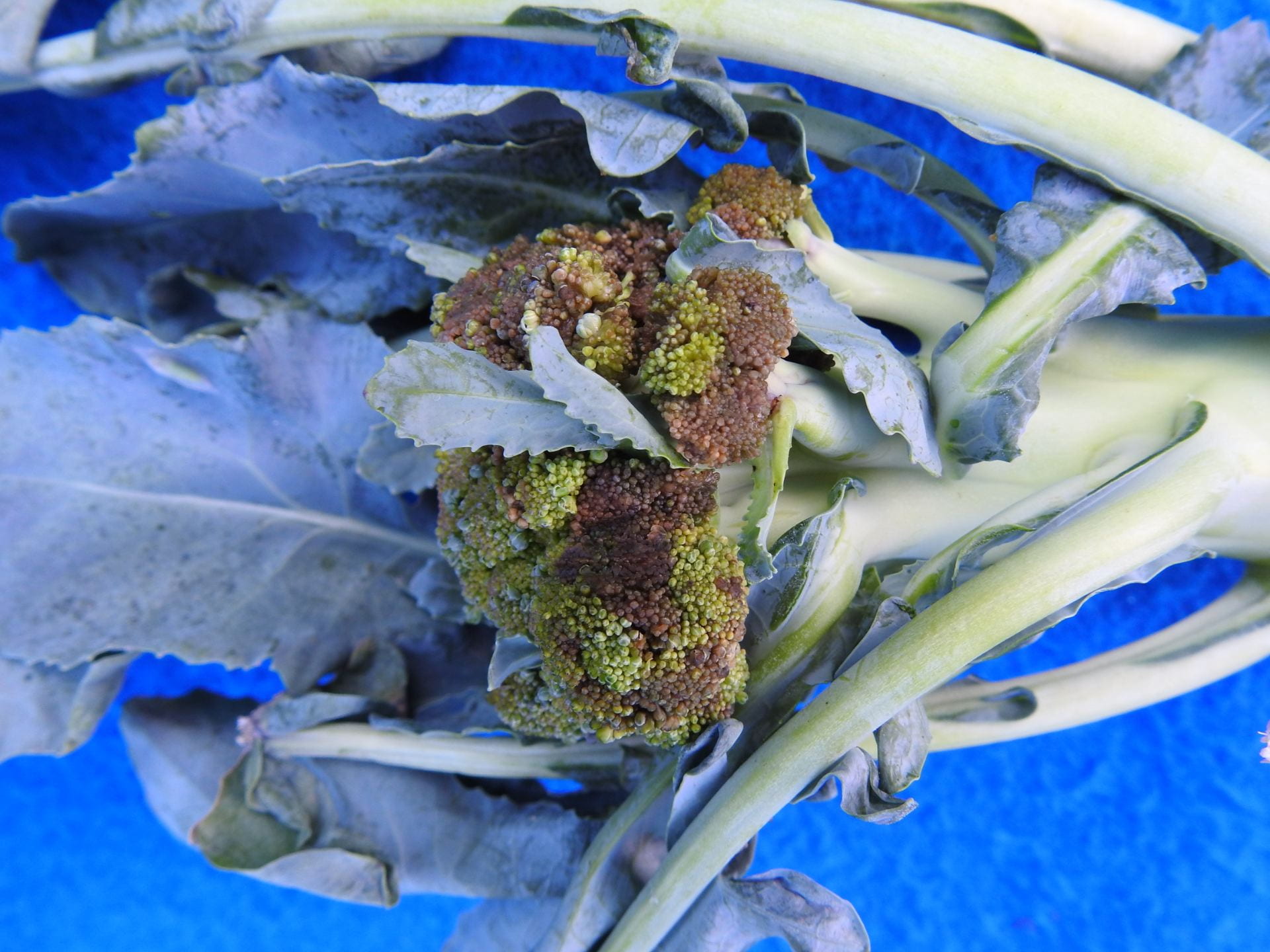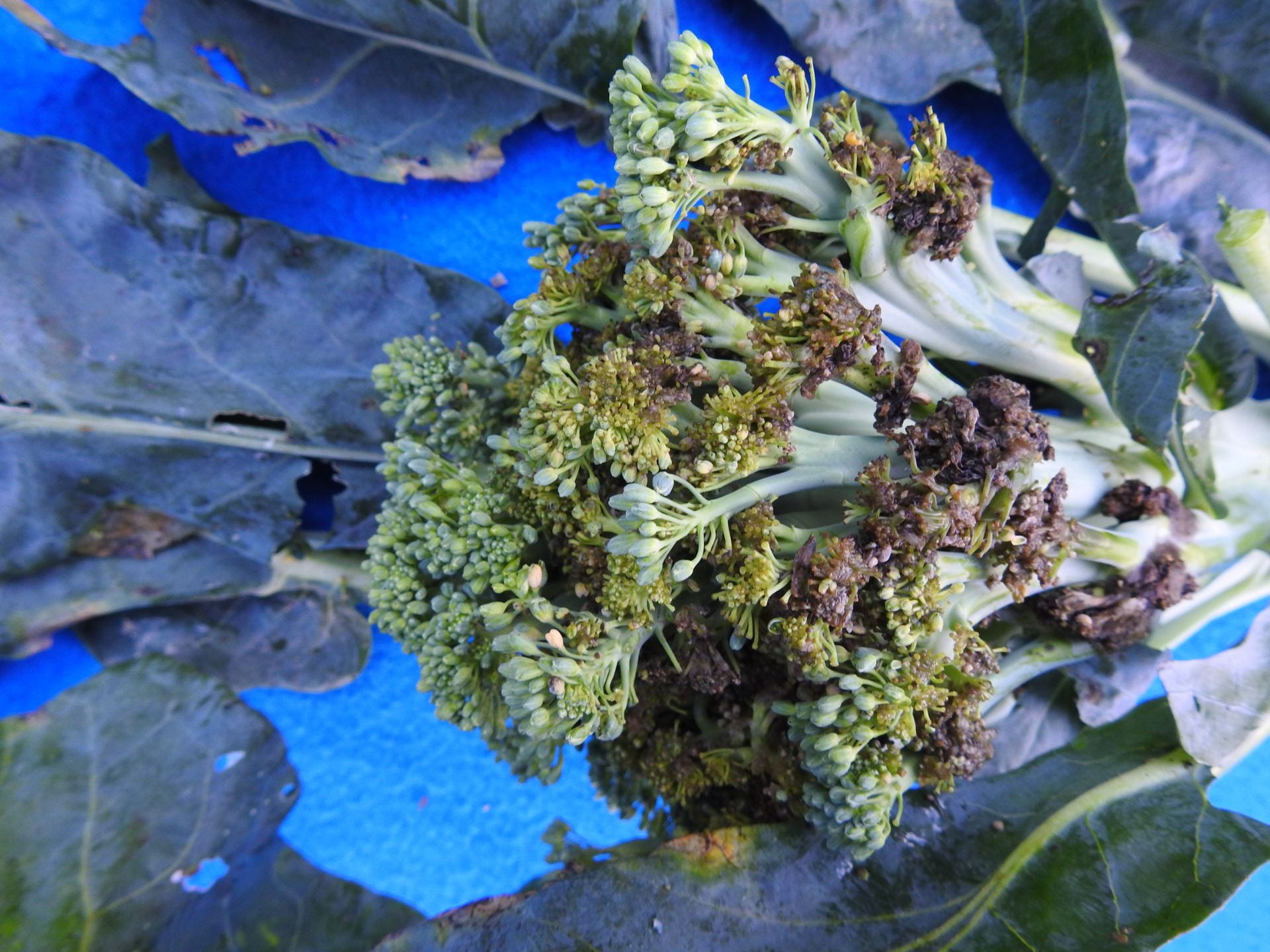Bacteria causing soft rot are common in soil. They are dependent on there being damaged plant tissue because they are not able to get into plants through healthy tissue. Injury from insect feeding, physical damage, heat and diseases can all provide an entry place for these bacteria. Broccoli heads being wet for extended periods create ideal conditions for infection. Plant tissue with soft rot usually smells bad.
Minimizing injury is key to managing soft rot. Also, select a variety that produces a tight, dome-shaped head with small buds so that water rolls off rather than staying on heads as this creates favorable conditions for soft rot to develop. The variety should also be tolerant of heat for early fall crops. Applying copper fungicides is not effective. With crops like broccoli, and also cauliflower, that are harvested over time in a planting, as heads become marketable size, it is important to cut them at an angle so water cannot stay on the cut stump surface creating ideal conditions for soft rot bacteria to invade stumps remaining in the field and thereby increase amount of bacteria in the planting.
Broccoli in the following photographs, taken on 3 October 2018, were affected severely by heat which predisposed them to head rot.





